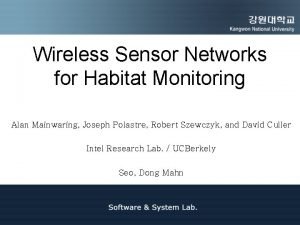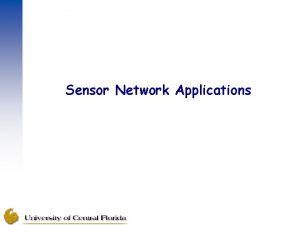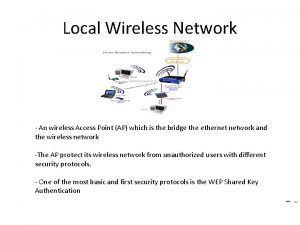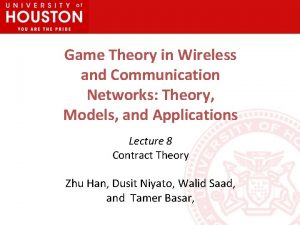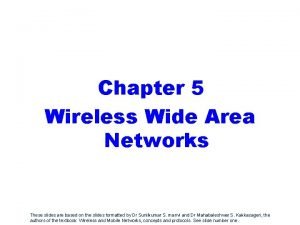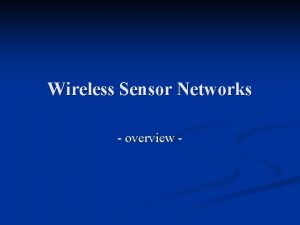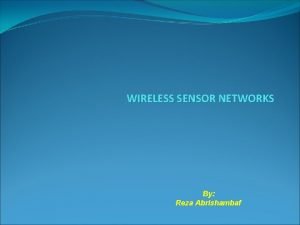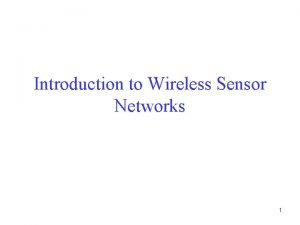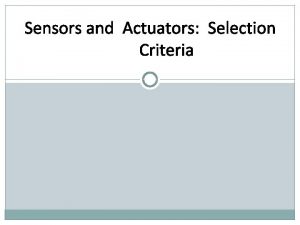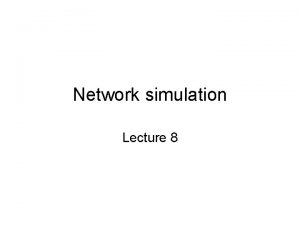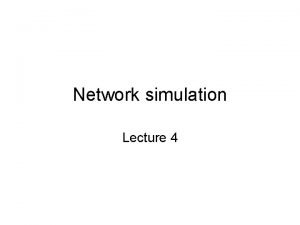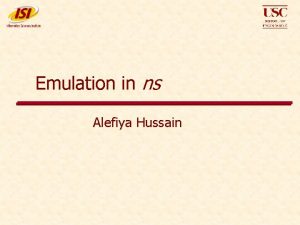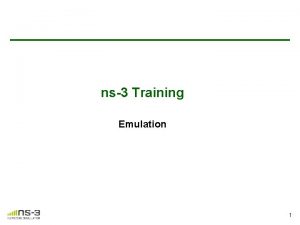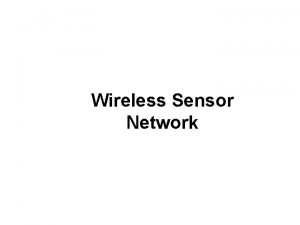Freemote A Wireless Sensor Networks Emulation System MINEMA















- Slides: 15

Freemote: A Wireless Sensor Networks Emulation System MINEMA Workshop – Lappeenranta – Finland – 21. 08. 2008 Raphael Kummer raphael. kummer@unine. ch Timothée Maret timothee. maret@hefr. ch Peter Kropf peter. kropf@unine. ch Jean-Frédéric Wagen jean-frederic. wagen@hefr. ch

Agenda ◆Context ◆Freemote architecture ◆How to work with Freemote ◆Future improvements ◆Conclusion

Wireless Sensor Networks ◆ Highly specialized operating systems adapted to limited hardware resource ► Tiny. Os ► Contiki ► … ◆ Complex, hard to learn programming languages ► Nes. C ◆ Application specific virtual machine ► Maté ► Swiss. QM ◆ Freemote: ► Lightweight Java-based tool for Java-based motes ► Focus on behavior credibility ► Mix real and emulated nodes ► Fully configurable ► Compatible with standards

Freemote: idea

Freemote: Architecture

Freemote: Architecture

Develop for Freemote

Run your Application

Watch your Application

Future development ◆ Integrate emerging Java Motes like Sentilla Point ◆ Integrate Tiny. OS 2 ◆ Linking Freemote with TOSSIM ► Running experiments including Java and Tiny. OS nodes (Tiny. OS 1 & 2) ◆ Link topology manager with In. Cov (Echenard and Wagen 2006) ► Reproduce IEEE 802. 15 signal propagation in indoor environments ► Emulate more realistically WSNs ► Experiment network ◆ Introduce realistic energy consumption measurements ◆ Introduce CPU measurements ◆ Provide live configuration and statistical tools

Preliminary experiment ◆ « ping » request using Tiny. OS 1 (AODV ad-hoc routing)

In. Cov : Coverage prediction for realistic radio simulation ISM Zig. Bee 2. 4 GHz band In. Cov prediction could replace the unrealistic circular coverage usually used in simulations [ http: //home. hefr. ch/wagen/In. Cov/ ]

Validation In. Cov RSSI Up RSSI Down RSSI Up Both Received Signal Strengh Indicator RSSI estimated on the up- and down-link (or no coverage) are measured and compared to In. Cov prediction (shown previously).

Conclusion ◆ 10’ 000 nodes emulation system ◆ Java Mote emulation system ◆ Same code runs on emulated nodes and JMotes (EIA-FR) ◆ Zig. Bee compatible (e. g. , Berkeley motes) ◆ GUI ◆ Available at: http: //www. assembla. com/wiki/show/freemote/ ► Free code source ► Run directly from website (Java Web Start) ◆ Basic system ► Many possible improvements (Tiny. OS 1 not supported anymore => TYMO routing, Java on Sentilla motes, In. Cov validation in various building, … ) ► Open to propositions: contact authors

Thanks to Fabien Le Saoût & Pierre Plaçais for their work during their 3 months stay at EIA-FR Thank you! MINEMA Workshop – Lappeenranta – Finland – 21. 08. 2008 http: //www. assembla. com/wiki/show/freemote
 Single node architecture in wireless sensor networks
Single node architecture in wireless sensor networks Alan mainwaring
Alan mainwaring Wireless sensor networks for habitat monitoring
Wireless sensor networks for habitat monitoring Freemote
Freemote Wireless sensor network protocols
Wireless sensor network protocols Telosb
Telosb Geoves butterfly wireless multi sensor
Geoves butterfly wireless multi sensor Sst wireless
Sst wireless Telecommunications, the internet, and wireless technology
Telecommunications, the internet, and wireless technology Bluetooth-based smart sensor networks
Bluetooth-based smart sensor networks Bluetooth based smart sensor networks
Bluetooth based smart sensor networks Wireless networking meaning
Wireless networking meaning Local wireless networks
Local wireless networks Game theory in wireless and communication networks
Game theory in wireless and communication networks Wireless wide area networks
Wireless wide area networks Wired media and wireless media
Wired media and wireless media

